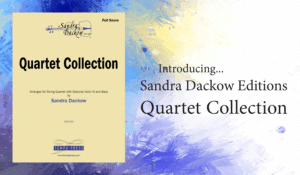
Midwest Clinic 2025
Wednesday 12/17Central Junior High Full Orchestra • 10:15am (W375E)40086 Dance of the Tumblers • Rimsky-Korsakov/Dackow Orchestra New Music Reading Session • 1:30pm (W183)40975 Symphony No. 12 in
While this work is denoted as Symphony No. 3, it is more likely that it is Stamitz’s first completed symphony. It is written in the ‘Manheim’ style (utilizing unique dynamic effects) and was finished sometime between 1741 and 1746. It is attributed to Stamitz; only it may have actually been completed by a close friend and contemporary composer, Antoine Mahaut, (a Flemish composer and flutist). It consists of three movements – Allegro, Larghetto, and Presto and is in the key of G Major.
The Larghetto needs to be connected smooth and ‘fluid’ throughout.
Shifting to the Allegro, be sure to bring out the moving lines in the upper voices. The lower voices (VC & DBs) need to be accentuated and cleanly articulated. Be sure to perform the dynamics with dedication.
In addition to an extensive list of publications, Dr. McCashin holds the title of Professor Emeritus, having completed 43 years of teaching at the university level. His former position was as Director of Orchestras and Professor of Conducting and Violin at James Madison University. During Dr. McCashin’s final 24 years of teaching (at JMU), he served as the Music Director and Conductor of the Symphony Orchestra, Opera Orchestra, Chamber Orchestra, and Camerata Strings. In addition, he taught Graduate Applied Conducting, MM, and DM academic courses for conductors as well as applied violin & viola. Dr. McCashin is a string educator and an active writer/arranger in the string education field. He maintained a busy Conference presentation schedule throughout his career, making presentations on conducting technique, string pedagogy, and the Math, Science, Physics, and Physiology of String playing.

Wednesday 12/17Central Junior High Full Orchestra • 10:15am (W375E)40086 Dance of the Tumblers • Rimsky-Korsakov/Dackow Orchestra New Music Reading Session • 1:30pm (W183)40975 Symphony No. 12 in

Acclaimed arranger Sandra Dackow brings her skills to the small ensemble with this collection of some of her best-loved arrangements. This Quartet Collection serves as

Thursday, March 21, 11:00am Ballroom D-E Vivace and ViBravo Orchestra Featured work: 1812 Overture Grade 3, String Orchestra, Peter Ilyich Tschaikowsky Arranged by Sandra Dackow

The holiday season is a time for celebrating with friends and family, and what better way to do so than through music? If you’re a
Be the first to know about new music, exciting news, deals and more!